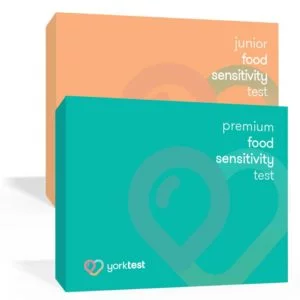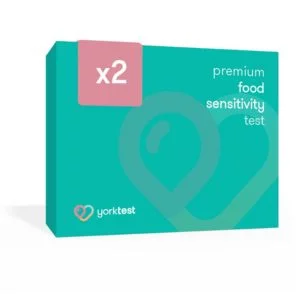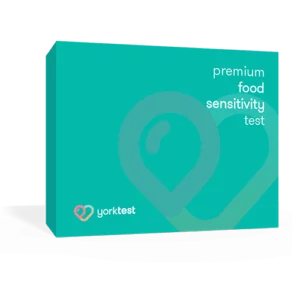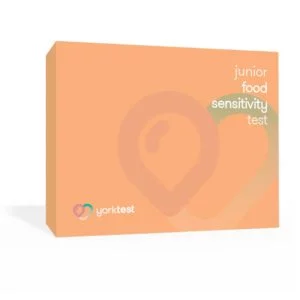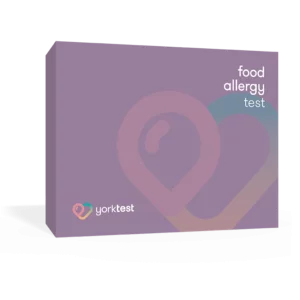- Cross-Reactivity: Citrus and Oral Allergy Syndrome (OAS)
- What are the Symptoms of Citrus Allergy?
- How to Test for Citrus Allergy
- Blood Test
- Skin Prick Test
- Elimination Diet
- Provocation Test (Food Challenge)
- Can You Treat a Citrus Allergy?
- Medications
- Immunotherapy
- Epinephrine Auto-Injectors
- Avoidance
- Foods to Avoid If You Have a Citrus Allergy?
- Citric Acid and Processed Citrus Powders
- Citrus-Containing Essential Oils & Skin Care Products
- Be Conscious of These Cross-Reactive Foods
- Pinpoint Allergic Reactions to Citrus with YorkTest
Citrus allergies, while uncommon, present a unique challenge to those affected by them. Unlike the more prevalent food allergies like nuts or shellfish that have been widely studied, citrus allergies fly under the radar but can cause significant discomfort and health concerns for individuals. The complexities surrounding citrus allergy aren’t just in its rarity; it’s also in how it intersects with other allergic reactions—namely pollen allergies—a phenomenon known as cross-reactivity.
Studies have suggested that among those with existing IgE-mediated allergy conditions, such as pollinosis or other food allergies, 39% had an allergy sensitivity to citrus fruits like oranges, lemons, and clementines. This research confirmed highly probable cross-allergenicity among citrus/grasses and citrus/apple proteins.[1]
So while data on citrus allergy conditions is limited, it presents a concern among those with pre-existing allergy conditions, particularly involving grass pollens and other related allergens. Here, we delve deeper into the science surrounding this unique food allergy, including the symptoms of citrus allergy, testing protocols, and treatment options.
Cross-Reactivity: Citrus and Oral Allergy Syndrome (OAS)
Oral Allergy Syndrome (OAS) serves as a significant case study in the complex world of food allergies, particularly when examining its connection with citrus fruits. This condition, which primarily affects individuals with certain pollen allergies, manifests through an intriguing process known as cross-reactivity.[2]
Here’s how OAS unfolds: proteins found in citrus fruits like oranges, lemons, limes, and grapefruits bear a striking resemblance to those present in various trees, grasses, and weeds that might trigger allergic reactions. The immune system can mistake these fruit proteins for their botanical counterparts—leading to an unintended defensive response, otherwise known as an allergic reaction.
One of the most common culprits linked to OAS is profilins, an allergen that frequently elicits IgE-mediated responses in about 10–20% of pollen-allergic patients.[3] The plant foods more often associated with profilin hypersensitivity are citrus fruits, bananas, persimmon, pineapple, muskmelon, watermelon, tomato, and zucchini. Research has highlighted profilins as responsible for fruit–fruit, fruit–pollen, and latex–food syndrome.[4]
For those encountering OAS for the first time—it’s essentially your body reacting to what it perceives as familiar allergens but within the context of food consumption. Symptoms are predominantly localized around the mouth or oral cavity; individuals may experience tingling or itching sensations on their lips, tongue, and mouth interior including throat tissues upon ingesting related citrus products. In some cases, mild swelling around lips or gums is also observed—a clear indicator of the body’s misinterpretation of harmless substances as potential threats.
This phenomenon highlights our immune system’s intricate nature and sheds light on why understanding such cross-reactivities is crucial for effectively managing symptoms and making informed dietary choices. It underscores a broader narrative about how interconnected our environment is with our bodily responses—an essential insight for anyone navigating life with food sensitivities like citrus allergies.
What are the Symptoms of Citrus Allergy?
Individuals sensitive to citrus fruits may encounter various symptoms ranging from mildly uncomfortable to severe, underscoring the importance of awareness and proper management.
At the forefront are oral sensations—severe tingling and itching that seem almost exclusive to the lips, tongue, and throat area upon consumption of citrus products. This immediate response signals your body’s adverse reaction. Accompanying these sensations might be visible signs such as redness or mild swelling around the lips and gums, which further indicate an allergic response.
The most frequently reported symptoms of citrus allergy include:
- Oral Reactions:
- Severe tingling and itching in the lips, tongue, and throat immediately after consuming citrus fruits.
- Redness or mild swelling around the lips and gums are visible signs of an allergic reaction.
- Skin Contact Reactions (Contact Dermatitis):
- Skin redness can resemble sunburn but is caused by contact with citrus peels.
- Burning sensations accompanied by relentless itching on areas exposed to citrus.
- Dry skin patches that may look similar to eczema alongside significant swelling at points of contact.
- Symptoms Associated with Oral Allergy Syndrome (OAS):
- Enhanced itchiness, burning, and tingling in and around the mouth.
- Notable swelling of the lips, mouth, tongue, and throat.
- Systemic Reaction Signs (Anaphylaxis – Rare but Serious):
- Widespread hives signaling internal distress against allergens.
- Flushed skin appears across different body parts.
- Swelling particularly pronounced around the mouth and throat regions potentially leads to breathing difficulties—a critical emergency indicator.
- Gastrointestinal disturbances such as nausea, vomiting, or diarrhea reflect systemic involvement.
- Dangerously low blood pressure pointing towards severe bodily response requiring immediate medical intervention.
The spectrum of symptoms associated with citrus allergies underscores the importance of vigilance and knowledge for those affected. Armed with this knowledge, people dealing with citrus allergies can take proactive steps towards managing their condition effectively—ensuring not just safety but also enhancing their quality of life amidst these dietary challenges.
How to Test for Citrus Allergy
If you suspect you have an allergy to citrus, it’s essential to navigate through the diagnosis process with precision and care. There are various citrus allergy tests available, each designed to uncover how your body reacts to citrus fruits, including lemon, lime, orange, grapefruit, and tangerine. Here’s an expanded look into these testing methods.
Blood Test
This test involves taking a blood sample to measure specific IgE-mediated antibodies that react against citrus proteins. A simple IgE blood test can determine the presence of elevated levels of these antibodies, which can indicate an allergic reaction.
When undergoing a blood test for citrus allergy, expect minimal discomfort from the needle prick used to collect the sample. It’s a straightforward procedure where results typically come back within one or two weeks. This type of food allergy test can be carried out in a clinical setting but is also a popular method used with at-home test kits.
Skin Prick Test
A traditional yet effective method in diagnosing allergies is the Skin Prick Test (SPT). During this procedure, small amounts of purified allergen extracts—including those from various types of citrus—are introduced into the skin via tiny pricks or punctures made on your forearm or back.
If you’re allergic, you’ll likely develop a raised bump similar in appearance to a mosquito bite at the site within 15-20 minutes. While slightly uncomfortable due to itching sensations associated with positive reactions, SPTs offer quick insights into what might be triggering your symptoms.
Elimination Diet
Sometimes understanding allergies requires observing how removing certain foods affects your well-being over time; this is where an elimination diet comes into play specifically for identifying food-induced allergies like those related to citrus fruits.
Initially involving strict avoidance of all forms of citruses for about two weeks—carefully monitoring any improvement in symptoms during this phase—the allergist will then instruct gradual reintroduction while closely watching for adverse reactions which may confirm sensitivity towards these fruits.
Provocation Test (Food Challenge)
Direct exposure under safe circumstances through A Provocation Food Challenge, although daunting brings clarity if done cautiously amidst professional supervision. It’s considered somewhat of a ‘gold standard’ with allergy testing due to it clarity and accessibility without intricate testing technology.
However, it’s also a more risky approach as it’s directly challenging the body by introducing suspected allergens. This strategy is often used when other tests yield inconclusive results or need further confirmation. Keep in mind that provocation tests are handled under controlled conditions in clinical settings equipped with emergency medical facilities just in case severe reactions occur unexpectedly during exposure.
Determining whether you have a citrus allergy should always involve some form of advice or counseling from healthcare professionals specializing in allergies. Not only can a qualified professional help guide you through selecting the appropriate test to achieve an accurate diagnosis safely, but understanding the test results, your unique condition, and how to move forward is just as important.
Can You Treat a Citrus Allergy?
Managing a citrus allergy effectively requires a multi-faceted approach, combining immediate treatments for allergic reactions with long-term strategies to reduce sensitivity and avoid triggers.
Medications
For those experiencing mild symptoms like itching or hives after consuming citrus, over-the-counter (OTC) antihistamines offer quick relief by countering the body’s histamine response—histamine being a chemical released during an allergic reaction that causes many of the symptoms associated with allergies.
Antihistamines work by blocking histamine receptors in the body, thereby reducing symptom severity. While effective for managing occasional mild reactions, they are not suitable as a standalone treatment for severe allergies.
Immunotherapy
This treatment is particularly considered when allergies severely impact daily life despite avoidance measures and medications. Immunotherapy involves gradually exposing individuals to tiny amounts of allergens over several years to desensitize their immune systems.
Immunotherapy works by essentially training the body not to react so violently toward these substances—in this case, specific proteins found in citrus fruits. It’s usually administered via subcutaneous injections under close medical supervision due either potential risks involved including inducing severe allergic responses itself if not correctly managed.
Epinephrine Auto-Injectors
In instances where there’s a risk or history of severe reactions such as anaphylaxis—a rapid onset full-body allergic reaction that can be fatal without prompt intervention—carrying epinephrine auto-injectors (e.g., EpiPen®, Auvi-Q®) becomes crucial lifesaving measure allows affected individuals self-administer medication immediately upon onset symptoms while seeking emergency medical help ensuring maximum effectiveness minimizes chances complications arising from delayed treatment.
Avoidance
Unquestionably, the most effective method for managing a citrus allergy is to meticulously avoid consuming or coming into contact with citrus fruits and their derivatives. This strategy encompasses steering clear of direct sources such as oranges, lemons, limes, and grapefruits, as well as indirect sources found in processed foods, beverages, and even some non-food items like skincare products and cosmetics.
Vigilant label reading becomes an indispensable habit for those aiming to maintain a diet devoid of any form of citrus ingredients. While avoidance is the safest route to prevent allergic reactions, it demands continuous education on potential hidden sources of citrus and awareness about cross-contamination risks—especially when dining out or exploring unfamiliar environments.
Foods to Avoid If You Have a Citrus Allergy?
Citrus is a broad category of fruits, which means it can be difficult to know what’s safe and what’s problematic. To manage a citrus allergy effectively, it’s crucial to be mindful of certain foods that can trigger allergic reactions, including
- Raw citrus fruits like oranges, lemons, and grapefruits.
- Citrus fruit juices, including those mixed in other types of juices.
- Unripe or freshly picked citrus fruits, as they can be more irritating.
- Citrus fruit seeds and rinds are commonly used in baking and salads.
- Artificially-flavored sweets and vitamin C supplements that contain citrus flavoring.
While identifying whole foods is straightforward, citrus derivatives are frequently found in everyday foods. It’s important to carefully read food labels and exercise caution when dining out or consuming processed foods that may contain hidden citrus components.
Citric Acid and Processed Citrus Powders
Citric acid, citrus powders, and other processed forms can be found in foods–sports drinks, salad dressings, deli meats, cheese, and canned foods–posing a hidden risk to individuals with citrus allergies. These more processed or extracted forms of citrus can be difficult to pinpoint, yet are widely used in a variety of cuisines and food products to add citrus flavors without the need for fresh fruits.
Both citric acid and citrus powder can often be utilized to enhance taste and aroma in foods like breakfast pastries, juice blends, jellies, sea salts, crunchy snack foods, seasonings, sauces, soft drinks, and other products. It’s essential for individuals with citrus allergies to carefully read food labels to identify any citrus powders or processed citrus ingredients in products they consume.
Citrus-Containing Essential Oils & Skin Care Products
Beyond just food items, allergic individuals should be cautious with essential oils, lotions, or skin care products that may contain extracts derived from lemon or other citrus fruits. Essential oils from citrus extracts like lemon, orange, or bergamot can contain allergenic proteins that may trigger allergic reactions in people with citrus allergies.
These citrus-derived oils can cause skin irritation and allergic reactions, especially when applied topically or inhaled. Simply put, be cautious with essential oils containing citrus extracts and tread lightly with topicals that may be citrus-infused, like lotions and balms.
Be Conscious of These Cross-Reactive Foods
Other foods share similar allergenic proteins with citrus, which can result in cross-reactivity symptoms.
This phenomenon can lead to oral allergy syndrome or pollen-food allergy syndrome, where an allergic reaction to citrus can manifest symptoms with other foods.
- Melons, bananas, and cantaloupe can cross-react with ragweed, leading to similar symptoms in ragweed allergy sufferers.
- Peanuts and hazelnuts may cross-react with birch tree pollen, potentially affecting those allergic to birch pollen.
- Watermelon, melons, carrots, tomatoes, and oranges can cause issues for individuals allergic to grasses like Timothy and Johnson.
- Spices like anise, basil, chamomile, cilantro, dill, fennel, oregano, paprika, parsley, pepper, tarragon, and thyme can be cross-reactive with mugwort.
Given the unique nature of these allergens, people with pollen allergies may experience OAS symptoms when consuming these cross-reactive foods. While not all of these foods will present a problem, it’s important to be aware of these cross-reactive foods to better manage your allergy effectively. Cooking or heating these foods can often reduce the likelihood of triggering OAS symptoms.
Pinpoint Allergic Reactions to Citrus with YorkTest
If you feel as though you’re experiencing an allergic reaction to citrus, testing is the critical next step. As a trusted ally in the field of food allergy and intolerance testing, YorkTest can help determine whether you have a citrus allergy through its Food Allergy Test.
YorkTest’s at-home test kit involves taking a quick finger-prick blood sample and sending it to their laboratory for analysis. The test provides accurate results within 7 days, showing IgE reactions to each allergen in a clear, color-coded format. By identifying specific IgE antibody levels related to orange, YorkTest can assist you in understanding your allergic reactions to citrus and other common allergens, guiding you on what foods to avoid to manage your allergies effectively.
Scientific References:
- Iorio RA, Del Duca S, Calamelli E, Pula C, Lodolini M, Scamardella F, Pession A, Ricci G. Citrus allergy from pollen to clinical symptoms. PLoS One. 2013;8(1):e53680. doi: 10.1371/journal.pone.0053680. Epub 2013 Jan 4. PMID: 23308273; PMCID: PMC3537725.
- Iorio RA, Del Duca S, Calamelli E, Pula C, Lodolini M, Scamardella F, Pession A, Ricci G. Citrus allergy from pollen to clinical symptoms. PLoS One. 2013;8(1):e53680. doi: 10.1371/journal.pone.0053680. Epub 2013 Jan 4. PMID: 23308273; PMCID: PMC3537725.
- Alessandri C, Ferrara R, Bernardi ML, Zennaro D, Tuppo L, Giangrieco I, Ricciardi T, Tamburrini M, Ciardiello MA, Mari A. Molecular approach to a patient’s tailored diagnosis of the oral allergy syndrome. Clin Transl Allergy. 2020 Jun 17;10:22. doi: 10.1186/s13601-020-00329-8. PMID: 32551040; PMCID: PMC7298840.
- van Ree R, Voitenko V, van Leeuwen WA, Aalberse RC. Profilin is a cross-reactive allergen in pollen and vegetable foods. Int Arch Allergy Immunol. 1992;98(2):97-104. doi: 10.1159/000236171. PMID: 1643445.


